Australia's First BBQ
This week, we have another special show from Perth in Western Australia. Chris Smith and Victoria Gill go in search of dolphins, find out how DNA sequencing technology has allowed us to find out what was on Australia's first barbecue, and give a science lesson to children in the outback. In the news, how glucose affects our willpower, why the Antarctic oceans are so different from the rest of the world, and the batteries that store power from renewable energy farms.
In this episode

01:30 - Can glucose control our will power?
Can glucose control our will power?
Transcript to follow.
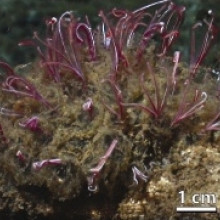
04:42 - Zombie Worms and Crab Invasions
Zombie Worms and Crab Invasions
with Dr Simon Morley, British Antarctic Survey
Kate - Well, I've been looking this week at the Antarctic Seafloor. Now, this international team of scientists was really interested into the difference between wood and bone when they end up on the seafloor. Now, in the rest of the world when bones from animals drift down into the depths, they get eaten up by these weird bone-eating worms called Osedax. They're sometimes known as zombie worms. I showed them to the office a little bit earlier and they were a little bit freaked out. So, if you're about to hit search on Google, I'd sort of take one step back from your computer there. And wood, when it gets down to the bottom of the ocean, similar things happen and it gets eaten up by molluscs, but what's really interesting about these worms and molluscs that eat up this debris in the ocean is that they obviously have a huge dispersal. There are huge distances to cover for such tiny creatures in order to latch on to the next bit of bone that might randomly fall down to the depths. But can they make it Antarctica? That's what they wanted to know. So, what the team did was they got a load of wood and a load of bone - whale bones in fact - and they left them 500 meters down in the Antarctic Ocean for a year. When they brought it back up again, what they found was the whale bone was covered in these Osedax, these zombie worms, but the wood was practically in pristine condition. There didn't seem to be any wood-eating ship worms or molluscs around. But why is the Antarctic Ocean so different from the rest of the world's oceans and seas? What makes it so special? We're joined here in the studio by Dr. Simon Morley who studies the Antarctic Seabed at the British Antarctic Survey here in Cambridge. Simon, why are the Antarctic waters so different?
Simon - The Antarctic waters are separated from the rest of the world's oceans by the polar front or the circumpolar current. So, this is a circular current that goes around the Antarctic and it goes from the surface and in places, actually goes to the seabed. So that acts as a barrier. It's a very sharp discontinuity that potentially stops larvae and other animals crossing the front.
Kate - Is cold also an issue or obviously, if this is providing a barrier, does the temperature change more dramatically?
Simon - Absolutely, yeah. This is also a very sharp change in temperature. So, within the southern ocean, it is the coldest ocean on the planet and temperatures there, they're actually too cold for many animals from outside the southern ocean.
Kate - How does this mean the animals change? Are they adapted differently to be able to live in those waters?
Simon - They are. Many of the animals that live in the Antarctic have these special adaptations that allow them to live in the cold. So, there's fish with anti-freeze, there's giant sea spiders that have taken the place of crabs which can't live there because it's too cold.
Kate - When we say giant sea spiders, how big are we talking here?
Simon - These can be the size of a dinner plate. They're clearly not true spiders, but they're pretty impressive beasts.
Kate - Why are we so interested in these Antarctic waters? I mean, your research obviously looks into shallower waters than this research, but is it just that these animals that live there, that survive there are so different from the other ones? Is there anything else special about that environment?
Simon - I mean, these animals that live there, so they're adapted to the cold and that makes them very sensitive to very small increases in temperature. And also, it's one of the most rapidly warming oceans on the planet. So, if you want to understand how animals are going to be affected by climate change, it is one of the best places to look.
Kate - And how are those animals being affected by climate change? Are we already seeing differences?
Simon - We are seeing some complicated and subtle differences already, but the predictions we're getting, based on the sensitivity of these animals make us very worried about their ability to survive. Even through the next 200 or 300 years, we expect to see some major changes in the animals that live down there.
Kate - You're talking about sort of investigating these animals who live in such extreme temperatures and extreme environments. How are you doing that in the middle of Cambridge?
Simon - Yeah, so I'm lucky. Many years, I get to go to the Antarctic for a couple of months, go diving and do my research on the animals. But we also have an aquarium here in Cambridge so we can do some experiments in between, and we get animals brought back, so we can look at the effect of climate change on these animals.
Kate - I'm now terrified to one of those dinner plate sea spiders hanging around in an aquarium in Cambridge somewhere.
Simon - Not quite dinner plate-size, but there are one or two pretty big sea spiders.
Kate - That's worrying. So, you mentioned that crabs couldn't go to the Antarctic. Is that why there are so many sea spiders about?
Simon - When the Antarctic cooled crabs have a real problem, they have magnesium in their blood and at really cold temperatures, that acts as an anaesthetic. So, there are no crabs in the shallow water of Antarctic and we think that the sea spiders filled the gaps left by the crabs.
Kate - So, with climate change in place, how can that change the environment of the Antarctic?
Simon - So, this is a really interesting story because very recently, a new piece of kit was deployed in the Antarctic, into the deep sea. They found crabs where they haven't previously found them. It's a really fancy bit of kit and who knows if those crabs were currently there, but weren't seen or whether they have actually moved in. We need to do more research, but there are certainly crabs just kind of hanging off in the deep water of the Antarctic and if the surface waters and the shallow waters warm as we predict then in a few years, in a few hundred years' time, the crabs could easily come back into the shallow waters.
Kate - So, you're making it sound like they're plotting which is totally playing into my fears here, but it's very exciting. This paper is obviously not just interesting because of, we find out more about the marine biology of the Antarctic but also because if wood is so well preserved, we might be able to find historic wrecks. So, Ernest Shackleton's Endurance for example sank in 1916. I grew up on stories of Antarctic adventure like Ernest Shackleton. For me, it's very exciting that we might be able to find this pristine ship lying in the bottom of the ocean. Are people sort of itching their fingers about being able to go out there and find it?
Simon - Yeah and I believe there's at least one or maybe more expeditions that are currently really interested in going to search for this wreck. Wouldn't it be amazing if bits of that wreck are still sitting there? It's pretty deep, so it's in a few thousand meters. So, it would be quite a challenge, but it would be amazing to find that.
Kate - Where can I sign up is my only question. I mean, do they take on cabin boys?
Simon - Well, I have absolutely no idea, but you'll have to get in the queue behind me.

10:53 - Quick Fire Science: Hyperloop Trains
Quick Fire Science: Hyperloop Trains
US-based entrepreneur Elon Musk is not a man who's lacking ambition in life. His company Space-X has already built rockets which compete with those used by NASA and the European Space Agency, and last year one of them became the first commercial spacecraft to visit the International Space Station. This week, however, it's another of his projects which has been in the news - a new kind of train which he thinks could transport people over the 350-miles between Los Angeles and San Francisco in only 35 minutes.
- The Hyperloop trains work by seating passengers in capsules, which are then fired down tubes at close to the speed of sound.
- To reduce air resistance, vacuum pumps will suck most of the air out of the pipe.
- The pumps will be powered by solar panels on the top of the tube, but one tiny crack anywhere along its 350-mile route could bring the trains to a halt.
- No one has ever made such a large vacuum tube before. The closest they've come is the Large Hadron Collider, but even that is tiny in comparison to what Elon Musk is proposing.
- To reduce friction even further, magnets are used to levitate the capsules in the middle of the tube, without any contact with tube's walls, just like a mag-lev train.
- But magnets are also used to propel the capsules forward, using an arrangement called a linear motor.
- In such a motor, a magnet on the front of each train interacts with magnets on the side of the tunnel. These attract the train as it approaches, and are flipped to repel the train as soon as it passes, so that they always push the train forwards.
- Assuming that capsules are fired once every two minutes, and each could carry 28 passengers, Elon Musk thinks that the system could carry over 800 passengers an hour.
- One of the biggest difficulties of travelling so fast is that even the slightest bend in the track will produce enormous g-forces in the capsule, so the track has to be almost completely straight.
- But these trains might take a while to get off the ground. Elon Musk says he's too busy with other projects to build it himself, but hopes someone else might step in.
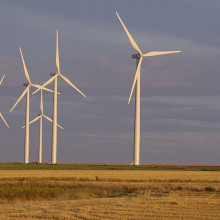
13:25 - New batteries for renewable energy farms
New batteries for renewable energy farms
with Cullen Buie, MIT
At the moment, there isa big debate going on about the fact that the UK needs more energy, can't decide where to get it from. One of the options is solar panels and wind turbines which offer really low carbon ways to generate power, but they only work when the sun shines or the wind blows. To make sure we've got power 24 hours a day, we need a way to store the energy that they generate and until now, this has been really expensive. However, writing in the journal Nature Communications this week, scientists from the Massachusetts Institute of Technology think that they've found a new and really cheap form of battery based on bromine solution. Dominic Ford spoke to Cullen Buie all about his idea.
Cullen - So, the great thing about this battery is that it gets the performance of systems with a membrane, but it eliminates the cost of the membrane. So, this is the next we have to no membrane which is one of the most expensive components of the cell.
Dominic - So, what's this membrane doing in the battery?
Cullen - So, the membrane is in the battery to separate the reactants. So you have reactions happening either side of the system and so, you need to separate those reactions or else they would happen spontaneously and you wouldn't be able to get any useful energy from it. What we propose is a membraneless hydrogen bromine batteries. So, batteries are typically characterised by their chemistry. We have this hydrogen bromine chemistry which actually isn't new. This chemistry has been around and known since maybe the '70s and people have been excited about it because of the cheap and abundant reacting materials, and the potential for high efficiency. The problem is that it's very difficult to design a membrane that will last for the thousand of cycles and that is low cost. So, it's been limited by largely the materials because this hydrogen bromine battery makes hydrobromic acid which is difficult to work with for some membrane materials. Conversely, maybe 10 years ago, a research group at Harvard invented these membraneless systems. So, they were the first to propose eliminating membranes altogether and using fluid mechanics in order to keep your reactants separate. The issue there was that they used chemistries that- they didn't produce a lot of power. So, it was interesting, but for the most part, the industry has disregarded these cells because they never produce enough power or energy in order to make them practically viable. So, what we've done is taken these two technologies which have kind of been sitting on the shelf effectively and put them together. And by putting them together, we get a hydrogen bromine system that now eliminates its issues with the membrane. And so, by eliminating the physical structure, we eliminate one entire component and all of its associated costs and complexity.
Dominic - Now, you're using bromine. Why is that so especially cheap?
Cullen - So, bromine is all over the world. It's in saltwater. So, any place where you have a large body of saltwater, you're effectively, as a by-product of harvesting other things from saltwater, you get a lot of bromine.
Dominic - I know you're invisaging this battery for use with renewable energy generation. Why is it so important with renewable energy farms to have these large batteries?
Cullen - You have no control over when the sun is shining. Demand varies throughout the day. So, if you could couple storage with these intermittent sources like solar and wind, you can store the energy when it's not being used and then sell it back to the grid when it is being used.
Dominic - When I think of new battery technologies, I think of cell phones and iPads, and so on. How do the needs of renewable energy farms compare to what you need for say, a cell phone?
Cullen - They're much more cost restrictive. So, the battery in your cell phone or in your laptop is probably at least 10 times more expensive than what you would like to see for something that's going to go grid scale.
Dominic - I guess I find that quite surprising actually because you think if you're building a huge wind farm say, you've got a lot of infrastructure there. You're pouring concrete for these windmills. I would've thought the cost of the battery on the back of that would be relatively slight cost.
Cullen - Our prevailing battery technologies are still very expensive. They use a lot of precious metals. They use things that are difficult to contain or control. And so, when you talk about that large scale, it's difficult to make it scale and make it affordable.
Dominic - Is lifetime also an issue here? I mean, I'm thinking, if you're building something in the remote desert to harness solar power or you're building an offshore wind farm presumably you don't want to be replacing those batteries every few months off the back of that renewable energy farm.
Cullen - Yeah, you nailed it right on the head. Lifetime is absolutely an issue. You want thousands of cycles, maybe 10,000 cycles. So, you mentioned batteries before. How long does your battery actually operate? Maybe you get a year or two and then after 2 years, you notice all of a sudden, it can't hold any kind of charge. That would be unacceptable for something like a grid scale application.
Dominic - And the other problem that we have with cell phone batteries is the memory effect where if you're only ever half discharging it, then it doesn't tend to hold its full charge any longer. That I guess is also something you've got to avoid in these batteries that are being charged when the sun shines and discharged when it's cloudy.
Cullen - Yeah, you'd like to minimise all those effects, so it's a very challenging problem. What we presented is just one more way and the novelty in this one is that we've eliminated one of the more costly components in the battery.
Dominic - How long do you think it would take to get this from the lab into the field? I mean, if you're saving a lot od money, if this is very cheap then presumably, the energy companies would be very keen to use this as soon as possible.
Cullen - I would say, 5 to 7 years. We're talking about developing a new battery, a new type of battery. New batteries don't come out very often and part of the reason is, battery development is hard.
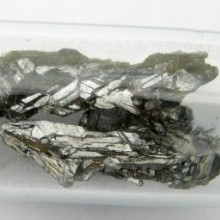
19:26 - Searches for Arsenic Contaminated Water
Searches for Arsenic Contaminated Water
Ars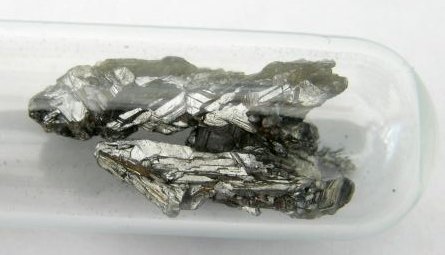 enic contamination of groundwater is a problem that affects about 140 million people around the world. Now researchers have developed a model that can predict the location of high-risk contamination, and are using it to identify potential arsenic hotspots in China.
enic contamination of groundwater is a problem that affects about 140 million people around the world. Now researchers have developed a model that can predict the location of high-risk contamination, and are using it to identify potential arsenic hotspots in China.
Many people living in arid parts of China are dependent on deep wells that tap groundwater aquifers. But local geology means than some of these aquifers have dangerously high levels of naturally-occurring arsenic. In 2001, the Chinese Ministry of Health started screening the country's wells, and it had checked almost half a million by 2005. But that expensive operation covered just 12% of China's counties - it would take decades to do the rest.
A team led by Luis Rodriguez-Lado at the Swiss Federal Institute of Aquatic Science and Technology has developed a way to speed up that process. Their model looks at eight geological factors, including soil salinity, wetness and topography, which together reveal where groundwater is likely to be laden with arsenic.
The researchers tested the model using data from sites that have already been surveyed in China. It classified areas as either high or low risk, depending on whether arsenic levels in water exceeded the 10 microgram per litre limit recommended by the World Health Organization. The model correctly identified 83% of the high-risk areas.
Overlaying those arsenic risk figures on to a population map reveals where the greatest numbers of people face worrying arsenic exposure. That should allow Chinese authorities to prioritize their water testing.
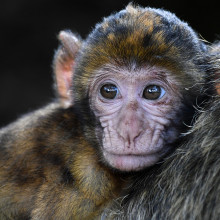
23:00 - New model for Schizophrenia
New model for Schizophrenia
A way to model in a monkey the brain responses seen in patients with schizophrenia has been described by US researchers...
Schizophrenia is a serious, debilitating mental illness, but is poorly understood. Most treatments work on the basis that it is cause by a dysfunction in a particular neurotransmitter system in the brain: dopamine. However, although treatments are often effective for the 'positive' symptoms - delusions and hallucinations - there are other symptoms, such as problems with decision making and other cognitive processes that the drugs do not control.
The brains of patients with schizophrenia react differently to those of healthy people in some situations. Schizophrenics are less able to detect a stimulus that is different to the rest, and direct their attention to it- something most of us do very naturally. This difference can be seen using electroencephalography, or EEG, where electrodes are placed on the scalp to read the brain waves.
Intriguingly, the drug ketamine, an anaesthetic agent that acts on NMDA receptors that respond to the neurotransmitter glutamate, can also cause psychotic symptoms similar to schizophrenia in healthy adults; critically, these psychotic symptoms last only as long as the drug is in a person's system.
Now, in a study published in PNAS, Gil-da-Costa and colleagues from the Salk Institute for Biological Studies have shown that macaque monkeys show the same difference in brain activity when given ketamine. The hope is that this could lead to a new wave of treatments, which counteract this change in NDMA receptor activity, rather than affecting the dopamine circuits.
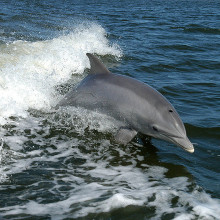
27:20 - Studying Perth's Dolphins
Studying Perth's Dolphins
with Delphine Chabanne, Murdoch University
Victoria Gill headed out onto the water with Murdoch PhD student Delphine Chabanne to find out more about the population of dolphins living in Perth River.
Delphine - Hopefully, we're going to see some dolphin upstream, so we just came back from downstream and we didn't see any, but the Swan and Canning River in fact is big enough to have a chance you'll see them today.
Victoria - Exciting, right! Well, let's go.
Delphine - So, using the dorsal fin and photo identification, we can recognise each individual so that we know which individual associate with another one. The bottlenose dolphin associates with a typical individual. Generally, you will see a group of male together and a group of female with calves together. So, that is something that I'm looking at. First of all, we are trying to... ah, we have dolphin.
Victoria - That's amazing! Wow! So, how many can we see.
Delphine - At least 4 of them, maybe 5.
Victoria - And you said we've got Gizmo. I guess Gizmo is a bit of a celebrity.
Delphine - Yeah. Gizmo, it's a calf. It's very easy to recognise because this calf was unfortunately entangled last year by a fishing line around his dorsal fin. It took us, the Department of Environment Conservation and the Police Marine and the work from all of the community a bit of time to be actually be able to disentangle it. But he's recovering very well even his fin has been well-damaged. It's always very great to see this little boy actually.
Victoria - Can you just describe where we are Delphine, because this is an amazingly urban, well suburban, I suppose, site to be spotting big marine mammals like this. So, where in Perth are we?
Delphine - So, we are in the freshwater bay, just north of (29:35). So, here it's a marina and that you will very often seen there's dolphin in this area as well.
Victoria - What's good about this area for them?
Delphine - At the moment, they're actually foraging and socialising between the cows. So, I guess it's a very good spot for feeding.
Victoria - So, when you spot them, what's the sort of process that you go through to gather your data?
Delphine - So, we basically mark a location to spot them on the map. We're also taking photo of their dorsal fin so that we can recognise them individually. We're looking at their behaviour so that would be resting. In that case, it's foraging/ socialising for the calves and you also look at - so, when you look at the composition, that would be mother and calf, and you try to check out the distance between the mum and the calf basically.
Victoria - And you're taking the photos to keep a log of what their dorsal fins look like because that's how you identify them isn't it? You look at the different shapes and notches on their dorsal fins.
Delphine - Yeah, that's right. So, we're looking at the shape of the dorsal fin, but also, any nitch and notch on the fin which is actually what we're using to identify them.
Victoria - What sort of challenges do they face, living in an environment like this? It's quite a busy marina around here. We're surrounded by the suburbs. There's a lot of activity, lots of boats, lots of fishing. How challenging is it for these dolphins to live in an environment like this?
Delphine - Well, you basically see everything - a lot of boats, you also have a lot of fishing, so it's a lot of fishing line say, in the water unfortunately, and so, the dolphins are in a very high risk to be entangled by a fishing line. So, it would just be stuck and start cutting a bit more or even deeper and get infection, and just touch the whole health of the dolphin.
Victoria - What do you hope, what information you'll be able to find out that'll help protect these animals by studying in the way that you do?
Delphine - Well, first of all, trying to looking at which habitats the dolphin area, the dolphin are using the (32:02) river would be very good things to monitor, both recreational and any other activity in a typical area. Secondly, we're trying to and it's not trying, it's all the time, pass the message to everyone, asking to take their rubbish out.This is one of the major issue in an urbanised area, hard to control, and if no one is doing anything, it will be just be (32:32)
Victoria - So, you're trying to spread the message about people not leaving fishing equipments and rubbish, and other things that they might be able to ingest or get tangled up in in the water.
Delphine - That's right.
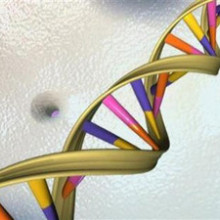
32:49 - Australia's First BBQ
Australia's First BBQ
with Mike Bunce, Murdoch University
Mike Bunce, from Murdoch University, is using the science of DNA to unlock the secrets of the past, present and future.
Chris Smith caught up with him to find out more.
Mike - In a nutshell, what our lab is good at is getting DNA out of really crappy substrates sometimes literally because we work a lot both on fossilised faecal material, but also modern faecal material.
Chris - Why should that be difficult?
Mike - In the post mortem environment, after you die, your DNA starts to decay and also, when you eat, material of the DNA starts to decay as you start digesting it. Why it's difficult is that during that decay process, the DNA starts to break into small little pieces. So, it's technically challenging because we've got to try and get all these small bits of the jigsaw puzzle and try and piece them all together again.
Chris - So, how are you using this technique?
Mike - We've got research programmes, looking at fossil bone material. We use it to look at the faecal material of penguins that live off the coast here to figure out what they're eating. We use it in the airport environment to look at birds and what's in their gastrointestinal tract after they've had a bad encounter with an aeroplane. So, there's lots of applications of how we can use degraded material and try, and figure out what's actually in it.
Chris - Tell me about the bird example; I've not come across that before.
Mike - We were contacted by Perth Airport here in Western Australia. When birds come into contact with airplanes either literally, by hitting them or they go through the jet wash, they cost the industry over a billion dollars a year. We first got involved with the airport, mainly through the idea of swabbing airplane engines and wings, to try and figure out what species is actually in that blood smear that you might swab off an engine cowling for example. But the question quickly became more subtle than that and we were saying, "What was the bird doing at the aerodrome in the first place?" And so, when we had carcases like that, rather than them being discarded, we were actually trying to extract as much as scientific information as we could from them, which involved dissecting them open,taking out gut contents, and then figuring out what brought them to the aerodrome in the first place. Were they eating grasshoppers? Were they eating grass or trees that were planted in and around the airport?
Chris - Have you found out what was attracting the birds?
Mike - Yeah, well we looked at about 80 odd birds, things like galahs, cockatoos, water birds and of course, they all have different diets because they're different species - things like galahs which are flocking birds- they ate a lot of this invasive weed called erodium. And so, we know right from the outset that this is not a good thing to have around your airport especially not on a high risk bird species that flocks. Of course, if we end up with flocking birds and an airplane hits a flock of birds, the implications are of course much more damming than they are, just a single small species. So, we are actually providing information on grass and weed species where better control measures could actually reduce the incidences of aircraft interactions with the wildlife.
Chris - What about way back time because this area is particularly rich? If I just go southwest out of Perth a couple of hours, I'm along Caves Road in the Margaret River region, and having been there, it is beautiful, but there's a very rich archaeological scene running through there. Are you working there?
Mike - Yes, we're doing a lot of work in the southwest corner of Australia. It's one of the 34 biodiversity hotspots in the world. There's huge numbers of endemic taxa are only found here by going down some of the caves and looking at some of the archaeological sites and paleontological sites down there. We're asking questions like, "How many species used to be there? How biodiverse were they? What plants and animals used to live in the Sydney areas?"
Chris - So, someone will excavate one of these sites and they'll get what, bone? Is that what you're using to get the DNA?
Mike - We use both bone excavated from the material as well as sediment. So, to give you an example, Devil's Lair is one of the most famous archaeological sites in Australia. It's a sequence that goes back 50,000 years. Actually, the oldest campfire dated to Australia today at about 42,000 years was found there. So, Australia's first barbecue if you like.
Chris - Where is it exactly?
Mike - So, Devil's Lair is located right down the southwest corner close to the Margaret River area. So, when we excavate material down there, we take all the very small bits of scraps of bones that the archaeologists and palaeontologists aren't that interested in and we collectively grind them all up into a soup and then we ask the question, "What's in that soup of bone? How many species are in there? What's the biodiversity of say, kangaroos located in that soup of material?"
Chris - And I suppose because archaeology is in a series of levels or layers, if you take different bits from different layers, you've got a timeline there, haven't you, so you can map your biodiversity onto time.
Mike - And that's the key thing that we're trying to find. It's really how the biodiversity has changed over time.
Chris - What sort of quality of DNA comes out of that and how far back in time can you go?
Mike - The quality of DNA is highly variable. Some caves preserve DNA really nicely. Other caves do not. In the southwest caves in the southwest WA, we are getting DNA back to 45,000 to 50,000 years.
Chris - Are any surprises coming up as you unlock this amazing sort of molecular fossil that we've got in these bones?
Mike - There's always surprises especially when we're starting doing these bulk bone sampling really where we just collectively look at all the material. We're accessing things like swans that could only have ever got onto the site because people were hunting them and taking them in there. We've got these unknown sequences of kangaroos. The closest match that we've got to something is a tree kangaroo that now lives in Papua New Guinea. Clearly, that's not the species that used to be there, but something a bit like that was there. All we've now is a DNA signature. We've got no fossil to actually match up with that.
Chris - What about more contemporary studies because one other thing that I know you've been working on, because I saw you give a talk on this, was analysing what are in traditional Chinese herbal remedies-you can subject this to DNA analysis too?
Mike - Yes. It's really no different what it boils down to, whether we start off with a herbal medicine tablet, a 40,000-year old sediment sample, or gut contents out of a bird at an airport. They're all just degraded DNA. So, the herbal medicines, Australian Customs here was asking us, what is in this material? In a wildlife forensic context, it's illegal to trade in certain endangered species and so, we start off saying, "What are all the animals in the sample? What are all the plants in the sample?" So last year, we published our first paper in PLoS Genetics that looked at extracting DNA from herbal medicines and asking us, "What's in the mix?"
Chris - Dare I ask, what is in the mix?
Mike - It is a lot of undeclared plants and animal constituents in there and some of them are probably of quite worrying concern for human safety.
Chris - What sorts of things were you discovering?
Mike - One of the medicines that were seized by customs here has the species of Asarum in it. That's a genus of plant. Asarum has a chemical in it called aristolochic acid. This is a potent carcinogen that binds to your DNA and causes a bulge in your DNA, and when it copies it, and it will mutate that DNA strand and potentially cause cancer. That sounds quite extreme, but in actual fact, the highest rate of urinary tract cancer in the world in Taiwan where they have a lot of herbal medicines that contain Asarum in them. It's the species that really shouldn't be in any herbal medicines that we have because we know it's bad for us.
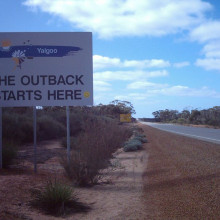
40:26 - Teaching in remote areas
Teaching in remote areas
with SIDE, Schools for Isolated and Distance Education
Although not really a problem in the UK, in Australia many children live in extremely remote areas, making it difficult for them to attend school. To make sure they get an education, SIDE, Schools for Isolated and Distance Education, provide lessons over the airwaves and the internet.
Victoria Gill and Chris Smith were asked to deliver a science lesson to a thousand children over thousands of square miles.
Angela - I'm Angela Signorile and I work at the Schools of Isolated and Distance Education in Perth and we're a fully distance ed school. I'm one of the online teaching learning coordinators here.
Victoria - And for people that don't live in a country as vast as Australia, can you explain just briefly what distance learning actually is and what you do here?
Angela - Yeah, absolutely. So, we are an online school and so, we teach to students who live in western Australia which is the biggest state in Australia. So, they can be in all sorts of situations. They can be in the country out in the bush as you might imagine on stations or they can be on small regional towns where they don't have access to the subject matter that they want to do. They can be metropolitan schools because they can't do a particular subject or they might be at SIDE for a whole lot of socio, emotional, medical reasons as well. So basically, any kid that can't access a regular face-to-face, bricks and mortar school can qualify to come to SIDE from kindergarten through to year 12.
Victoria - And that's what Chris and I are here to help you out with today. So, whereabouts are we going and what are we going to do?
Angela - We're going everywhere. We're going definitely all over WA, possibly, overseas. It just depends who's registered. We've invited all the children who come to SIDE and we've invited all the primary schools and the lower secondary schools, so we've got quite a lot of people enrolled in our event. It's an online event, so we do - it's a bit like Skype on speed I suppose. It can do a lot more things than Skype can, but it's similar. A lot of people know Skype and yeah, we don't know where we'll go, but we'll see when we go into the event. We've got a map of Australia where the children will plot where they are at the moment.
Victoria - That's exciting! Let's go and have a look at where we are. Let's go.
Angela - Fantastic! We're just going into this main building and we'll get to meet all the other folk in here.
Victoria - Hello.
Angela - Everybody, this is Victoria Gill and Chris Smith.
Victoria - Hi.
Chris - Hi.
Angela - This is Ross Manson. He's Head of Online Teaching and Learning.
Ross - Hello.
Angela - Jonathan Bromage, one of our Deputy Principals. We've got lots of Deputy here.
Robyn - I'm Roby Verboon, Deputy Principal of the Schools of Isolated and Distance Education in Western Australia.
Chris - So, how many people are on the roll here? Who are we going to be speaking to?
Robyn - On the enrolment basis, we have 2,500 students and possibly more from the ages of kindergarten - 4-year old, 5-year olds - right through to year 12 which are 17 and 18-year olds. And some small categories of adults - young mums...
Chris - What are the school rules?
Robyn - We have an attendance policy. The same as any traditional face-to-face school, but we don't physically have students on site.
Chris - How do you actually know that they're doing their classes?
Robyn - What we do every week is we actually have live lessons. So, we use teleconferencing. We call it Skype with a whiteboard and so, we can see each other's screen. We schedule lessons with the students, they're required to attend the scheduled lesson once a week. If they don't attend then we'll report them as absent.
Chris - So, the learning experience, the sort of engagement experience must have been totally revolutionised by the web and presumably, all these people in remote places are using satellite connections, aren't they, to get to you.
Robyn - They are and some of them are based on home, in their own family home, some of those actually in schools. So therefore, we may have a situation where there's a student want to do a specialist type of course or subject and a small country school may not have the staffing requirements to deliver. So there, we might have just one enrolment from that school, wanting to access especially physics or chemistry, teach any of those sort of things we run the normal, the same curriculum as a standard high school or primary school.
Chris - That's neat, isn't it? So, you can actually deliver quite specialist stuff to remote areas that wouldn't be able otherwise to field that particular aspect of learning.
Robyn - That's correct.
Chris - What about doing the exams though because if someone lives in the middle of nowhere and you're sending them all their information through the internet, you can't really fairly send an exam that way though can you? Or can you?
Robyn - No. Exams have to be paper-based still. We have situations where each student who's enrolled has to nominate a supervisor even if they're overseas and that supervisor has some criteria attached to it. So, it can't be mum or dad sitting down and supervising and helping with the exam.
Chris - What are the results like? How do people find this pattern of learning?
Robyn - This style of learning require students to be quite committed and dedicated and yet, when we get our results based on our year 12 results at the end of the year, we're comparable with schools across western Australia who are sitting exactly the same exam. In some of our subjects, we've actually been above state average.
Chris - What about peer support though? When children go to school, part of school isn't just what you learn in the classroom. It's what you learn about the people in the classroom with you and how to get on and relate to them. If you are in the middle of nowhere, you're not missing out a bit on that?
Robyn - A lot of our students form connections through their interaction online. So, for example at the moment, one of the year 12 history teachers has put up a forum where they actually go in and help each other. So, you don't have that sitting next to each other in a chair, but quite often, they then email each other from their own personal accounts and have a discussion or meet up.
Noel - I'm Noel Chamberlain. I'm the Principal at the Schools of Isolated and Distance Education.
Chris - Okay, now where are we going?
Noel - You are going to our torture chamber. It's called a multimedia studio. [laughter]
Chris - Lead the way. This is almost like a radio studio. So, there we are on the screen. The Naked Scientists, lots of exciting coloured solutions.
[background noise of teachers]
Victoria - They've taken my picture off Twitter.
Angela - Alright, so the way it works is, as I said, it's a bit like a Skype where we're sharing in this case, we're sharing voice, we're sharing vision, and I've taken the liberty of putting together some slides based on some questions that some of the children sent.
Chris - Brilliant!
Angela - And then I guess you guys are used to the adlib and whatever happens. So, children can say questions through text chat which is what I'll be monitoring. As Jonathan said, they could be sitting in front of an interactive whiteboard. A whole school could be sitting watching, so there could be 300 kids watching and try and gain some figures, just to get an idea of how many kids are there. These ones, it's pretty obvious that there's 20 sitting at a computer all over WA.
Chris - So, can they speak to us?
Angela - Yes, they can speak. No, they can speak.
Chris - Or they can just type that so we could get anything coming in.
Angela - In this smaller group, we'll get them to speak because we know that these are all SIDE kids. I know that their audio works. Okay, so let's go. Now, I'd like to welcome along our special visitors all the way from the UK, from England. We have Dr. Chris Smith and you should be seeing him there. There he is. Now, I'll give the video camera to another one of our guests and her name is Victoria Gill, and both Dr. Chris Smith and Victoria Gill, they work on this BBC programme. It is all things to do with science and that's what we're all about today because it's Science Week. We've got lots of questions coming through. Paul Tyler has got a question and Paul wanted to know what's the difference between a bacteria and a virus.
Chris - Hello to Paul and perhaps the crowd with you. The difference between a bacterium which is one single of a group of bacteria, one bacterium.
Angela - We've got so many questions coming in, so we're just going to keep ploughing through them. Here's one from Grace at Midlands Primary School and her question is, a pretty big one, "How much hotter can it get in the centre of the Earth?"
Chris - Okay, well the core of the Earth is about 6,000 degrees Centigrade and that's about as hot as it's going to get. Why is it hot? Well, there are several reasons why it's hot down there. One of them is what we call...
Angela - Okay, so pretty hot then, to say the least. Okay, great question there Grace from Midlands. There's a question here from Donna and Donna wants to know, why does salt melt ice? That's a great question.
Victoria - I don't know about you Chris, but I'm exhausted. How do you reckon that went?
Chris - I'm really amazed. It was good fun, wasn't it?
Victoria - It was good fun. Those were amazing questions.
Chris - Really good actually and from the middle of nowhere. But they're asking really insightful things, weren't they?
Victoria - Yeah, it's amazing to think that some of that was going out in classrooms all around western Australia.
Chris - But also abroad as well because there were people overseas. I don't know why we don't do this more in Britain really because I think that would be really popular wouldn't it or in other countries. Not just people who are remote.
Victoria - Yeah, it's a great idea. That was a lot of fun. I'm exhausted.
Chris - We really were exhausted after that, but it was amazing fun.
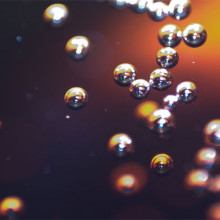
50:08 - Why does ice make fizzy drinks bubble over?
Why does ice make fizzy drinks bubble over?
Gerard - My name is Gerard Liger-Belair. I'm a Physics Professor in Reims University in France. So the physics of the bubbles, it's my area of expertise.
Hannah - So, yes, perfectly placed. Display the answer of Bella's question on why fizzy drinks fizz over when an ice cube is added.
Gerard - So, the main reason is that when you have a soda or fizzy water, it means that the liquid holds carbon dioxide molecules in excess. So, all those carbon dioxide molecule in excess must escape from the liquid medium. But to escape into the form of bubbles, the liquid needs some tiny imperfections in the glass and, at the micrometre scale, the surface of the ice cube is not at all smooth. It is full of tiny cracks. All these imperfections, when they will be in touch with the liquid supersaturated with carbon dioxide molecules in excess, those tiny molecules will be able to produce what we call from the scientific point of view, the nucleation process. It means that the liquid will be able to nucleate bubbles. This is the reason why when you introduce ice cubes in your soda or in your fizzy water, it will promote a bubbling process.
Hannah - Thank you Gerard, Champagne Bubble Physicist based in Reims, France.
So, soda drinks have been carbonated so they're full of carbon dioxide molecules, floating around in a liquid and that needs to escape. These carbon dioxide molecules can only form stable bubbles when they land on a surface with minute indentations, like the side of a glass or the surface of the liquid. An ice cube has lots of bubble promoting imperfect surfaces, so lots of bubbles form, causing the glass to fizz over. You can experiment further with this concept at home, suck on an ice cube to make the surface smoother and then add to the liquid, and less bubble "fizz-over" should occur...










Comments
Add a comment